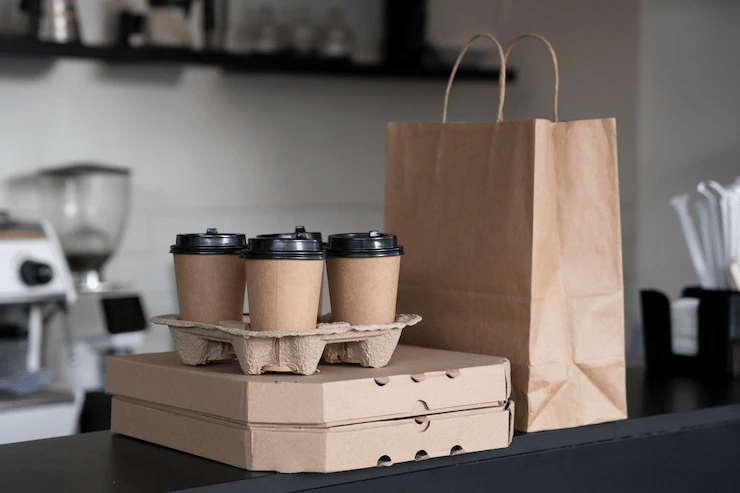
In August 2022, Beaver Paper, a renowned developer of sewn and sublimation media paper products, introduced TexSeal Eco Pouch sustainable paper packaging. TexSeal Eco Pouches are earth-friendly, innovative paper-based packaging solutions that expect to gain a lot of traction in today’s eco-friendly market. TexSeal Eco Pouches provide strong protection to the customers’ content while protecting the environment.
Reports confirm that till July 2022, nearly three-quarters of Chinese consumers avoided buying products that came with a lot of packaging, with the aim to limit any impact on the environment. In contrast, just half of the US consumers had the same intentions. Around the world, only under 50 percent of the total consumers said they plan to refrain from purchasing products with too much packaging.
Sustainable Packaging
- Can be efficiently recovered and used in industrial as well as biological closed loop cycles
- Is physically developed for optimizing materials as well as energy
- Is derived, developed, transported, and then recycled with the use of renewable energy
- Maximises the utilization of recycled or renewable source materials
- Is developed using materials that remain healthy all through the life cycle
- Is safe, beneficial, and healthy for people in the entirety of its life cycle
- Meets all the criteria for cost and performance in the market
- Is produced with the use of clean manufacturing technologies and safe practices
At present, a major concern for consumers while purchasing any product is sustainability. The latest sustainability-based studies have shown that the packaging design, such as recyclable and minimal packaging are the leading influencing factors for the shoppers that are focused on sustainability. To this end, the major companies and brands are continually improving their packaging to render it highly sustainable all through the supply chain.
While it is undeniably important to switch to renewable energy and practise recycling, it’s equally important for brands to focus on sustainable package design.
What are 2022’s Biggest Trends in Sustainable Packaging?
Recyclability
For packaging to be sustainable, it is required to meet three criteria, namely, be labeled correctly, be clean, and be separable. Companies are currently in the process of encouraging their customers to focus on recycling their products given the low awareness level. In the majority of cases, it is the packaging that serves as the basic communication medium for this. Sustainable, eco-friendly packaging designs work in favor of the marketing efforts of brands. Good sustainable packaging designs can elevate the brand’s position in an industry.
Biodegradable or Compostable Packaging
The main idea is to have a secondary use for packaging, with the primary being merely protecting the content inside. Biodegradable or compostable packaging is a relatively new, emerging niche concept that lets packaging have a second life.
No Compromise on the Brand Image
Sustainable packaging market is both ethical and luxurious. Brands like Burberry and Gucci prove that design and creativity ownership shouldn’t be forfeited while developing a sustainable product. Materials like bamboo paper, stone paper, organic cotton printed labels and biodegradable seals are a few ways that brands are able to achieve their sustainable goals. Consumers can expect to see a higher number of luxury brands jump on this bandwagon in the future, given their desire to go for brands that have environmental health in their minds and not just sales of their products.
Plastic Replacement
With respect to the type, plastic decomposition in landfills takes up to 1,000 years or even more. Materials that can be used as an alternative to plastic are seeing substantial demand.
IKEA has started assessing mushrooms’ potential for use as packaging in place of styrofoam packaging. The renowned brand has launched MycoComposite, which is a combination of mushroom root and agricultural waste.
In Poland, pressed hay is being extensively utilized for egg cartons. With the steadily mounting demand for sustainable business practices, companies are expected to continue to focus on finding eco-friendly replacements for plastic.
Brands and Their Efforts to Go Eco-Friendly
E-commerce/online sales shot up a whopping 51 percent in May 2021 as a response to the COVID-19 outbreak. Since then, online vendors have been scrambling to cater to the escalating demand for different products. Other than utilizing more bags or boxes, in-the-box protection is increasingly being used for ensuring the safety of the packaged contents till they reach their destinations.
Despite the pandemic and the subsequent chaos, online shoppers are still focused on the environmental effects of their purchases. A recent survey reveals that 86 percent of consumers took into account the environmental impact of the products at the checkout screen, such as the excessive waste they generated, and the level of carbon footprint. The same study states that 79 percent of the total respondents expect their companies to do more, in terms of mitigating packaging waste.
An accelerated number of brands are considering the impact of their products on the environment. Eco-friendly, sustainable products in personal care, fashion, and other industries have gained immense popularity over the years. But these values are now being extended to their packaging designs as well, with more and more mainstream firms joining them.
A Few Examples of the Brands Doing Their Part in the Eco-Friendly Drive
Calvin Klein
PVH, the worldwide apparel parent company of Calvin Klein, is planning to use packaging made entirely of sustainably sourced materials by 2025. To this end, the brand has been making a lot of landmark strides in its effort. At present, 76 percent of the brand’s packaging is completely recyclable. They’ve managed to save more than 230 tons of plastic every year by shifting toward thinner packaging materials for their clothing.
Amazon
Amazon’s Frustration-Free Packaging program involves working with other brands to eliminate wastage from the supply chain and make their packaging more sustainable. The program has created waves across the world, but one of its biggest successes is “eco-box,” under the tide brand, which makes use of 60 percent less plastic content compared to traditional packaging.
ASOS
ASOS is hailed as one of the leaders in the e-commerce sector. Although only a few of its products show signs of sustainability, the company is now in the process of mitigating any packaging waste, a practice that is part of its environmental policy.
Recently, the brand altered its signature white and black delivery bags by reducing their thickness level by twenty microns. This minor change ushered in a reduction of their impact by a whopping 583 tonnes of plastic annually. With the aim to be a circular fashion brand, ASOS is also using a closed-loop system along with their packaging developer to gather returned packaging and then incorporate it into new delivery bags.
Conclusion
With the rising focus on addressing climate change, the world now is approaching packaging in different, more sustainable ways. Instead of being a mere alternative to non-sustainable packaging, sustainable packaging is now rapidly emerging as the top choice.





